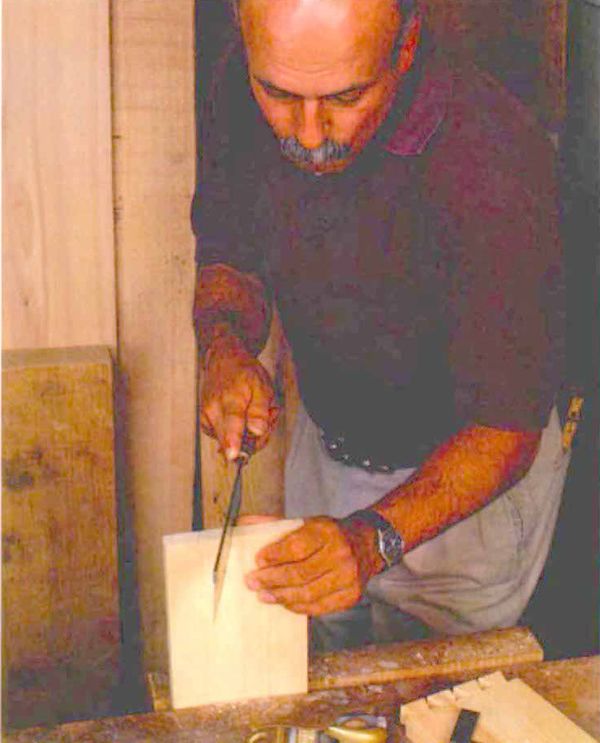
Synopsis: Mario Rodriguez uses the same types of European-style dovetail saws he started with, years ago, but he modifies the shape and set of their teeth so that they cuts straight, whisper-thin kerfs. He explains what’s wrong with new saws – from number of teeth to the set to the tooth pattern. He shows how he reduces the number of teeth, sets them, and joints them before sharpening them. And then he adds a word on practicing.
As a novice woodworker, I always marveled at those impossibly narrow-necked dovetails on 18th-century furniture. A chisel wouldn’t have fit into such tiny openings, so it was obvious that the craftsmen didn’t pare the joints. They must have cut them right the first time. I couldn’t imagine cutting such tight kerfs and straight lines with any saw I owned.
A little later in my quest for perfect dovetails, I tried Japanese saws. They always cut beautifully and left a thin kerf, but I never warmed up to them. I worried about ruining their fragile but costly blades, and I couldn’t get used to cutting on the pull stroke.
Now, years later, I use the same types of European-style dovetail saws I started with. But I don’t use a saw before modifying the shape and set of its teeth, as the photos on this and the following two pages show. The result is an American hybrid that cuts straight, whisperthin kerfs.
The trouble with new dovetail saws
When I buy a new saw, I find that it’s usually in no shape to cut dovetails. The most common problems are too many teeth, too much set and an inappropriate tooth pattern. Too many teeth— One problem with dovetail saws is the number of teeth they have. Most dovetail saws have between 18 and 26 teeth per inch (tpi). Many woodworkers think that the more teeth a dovetail saw has, the smoother it will cut. That’s not necessarily true. The more teeth a saw has, the more strokes it will take to reach the dovetail baseline. The more strokes it takes, the more the cut is likely to wander. On my modified saws, I’ve found that between 9 tpi and 12 tpi is about ideal.
Converting a saw with a lot of teeth is pretty straightforward: Just file away every other tooth. You may never have sharpened a saw, let alone altered the number of teeth, but it’s actually a lot simpler than it sounds. A saw vise is helpful, but the blade can also be held in a regular woodworking vise or a machinist’s vise, with wood strips on either side of the blade to grip and protect it. For both dovetail and tenon saws, I use a double, extra-slim taper saw file. These files are available at many hardware stores.
From Fine Woodworking #121
For the full article, download the PDF below:
Fine Woodworking Recommended Products

Olfa Knife

Bahco 6-Inch Card Scraper

Lie-Nielsen No. 102 Low Angle Block Plane























Log in or create an account to post a comment.
Sign up Log in